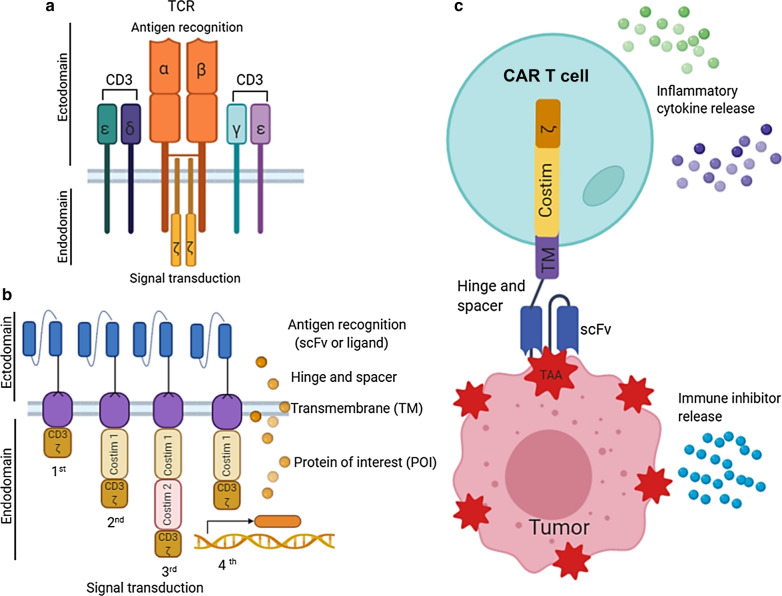Fig. 1.
Basic principle of CAR structure and CAR T-cell therapy. a T-cell receptor (TCR) complex. The TCR-CD3 complex contains variable TCR-α and TCR-β chains coupled to three dimeric signaling transduction modules CD3 δ/ε, CD3 γ/ε and CD3 ζ/ζ. T cell activation starts when the TCR binds to the antigen/MHC peptide on the surface of antigen-presenting cells or tumor cells. b Basic 1st–4th generation design of chimeric-antigen receptors (CAR). The ectodomain of the CAR is composed of an antigen-binding region (scFv), a hinge and a spacer. The transmembrane portion links the ectodomain to the intracellular endodomain. The endodomain contains a CD3ζ signaling domain (1st generation) and one or two costimulatory domains (2nd and 3rd generation, respectively). The 4th generation CARs (also called TRUCKs) contain an additional expression vector or a transgene to express a synthetic protein of interest (POI), for instance cytokines and chemokines. c Mechanism of CAR T-cell therapy. CAR T cells use the scFv domain of the CAR to recognize and bind to the tumor-associated antigen (TAA) on the tumor cell surface. This binding activates CAR T cells signaling through the endodomain CD3ζ module which elicits cytotoxic functions by producing perforins, granzymes and cytokines

